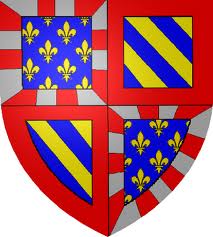Scott Madry, Ph.D.
Research Associate Professor of Archaeology
Burgundy, France research
I have worked in the Burgundy, France region since 1978, some forty years now! I started as a young graduate student of archaeology and anthropology at UNC-CH, working with Prof. Carole Crumley, who was conducting excavations and field survey looking at the Iron Age and Gallo Roman eras and the changes in patterns of regional settlement and land use, topics I am still interested in today.
My research focuses on the interaction of human societies, their levels of technology and social organization, and their environment. I am intrigued by the dynamic interplay between these over time and how each enables and limits the other. I also work with the ever-evolving suite of advanced technologies that are available for this work.
Please visit my new Burgundia Geomatica website to learn more about these fascinating technologies and how I have used them.
Mont Dardon
We excavated the Iron Age hill fort of Mont Dardon for the first time in these early years, and discovered multiple new features, including a very early 9th century Christian chapel on the summit, which was directly on top of a Gallo Roman temple to Mercury on the same orientation. Below that was an Iron Age structure, we assume was also a temple of some sort.
Field Survey
At the same time, we were doing extensive field survey in the surrounding area, looking for habitations, road networks, and other features on the landscape that could illuminate the settlement pattern in the Iron Age and in the transition into the Gallo Roman era.
Aerial Archaeology
I was at that time specializing in what is called Aerial Archaeology, where we search for archaeological sites, roads, and other features from the air in light aircraft (much of this is now done with drones, but that is not nearly as fun!). I was a licensed pilot, and so we would rent a small plane and fly the area, taking photos of possible features on the ground. I was fascinated by the fact that features from 2,000 years can still be seen from the air, and in understanding the processes that make this possible. We located several important sites and roadways, and my interest in this topic has remained and migrated into using high resolution satellite images to do the same from my office in Chapel Hill!
Satellite Remote Sensing
It was an easy step to move from aircraft to the new domain of satellites.
Historical Cartography
I have always been fascinated by old maps and we are very fortunate that we have a huge number of historical maps of our study area. Early on, I began to search for and purchase both original and reproductions of maps of our region.
Global Positioning Systems
GPS is another excellent tool for this work, providing real time positioning and timing in the field.
Geographic Information Systems (GIS)
GIS is a fascinating and powerful set of tools for regional spatial analysis, including archaeology.
Spatial Analysis
Incorporating all of these data together is the fun part, and we have conducted several different scales of analysis and subject areas.
Recent Historical Ecology Analysis of the Historical Era
See our Euuropean Historical Landscapes Working Group website for my most recent Burgundy work, and see our Publications, book chapters, and conference presentations pages for more information.
Please visit my new Burgundia Geomatica website to learn more about these fascinating technologies and how I have used them.



Recent Comments